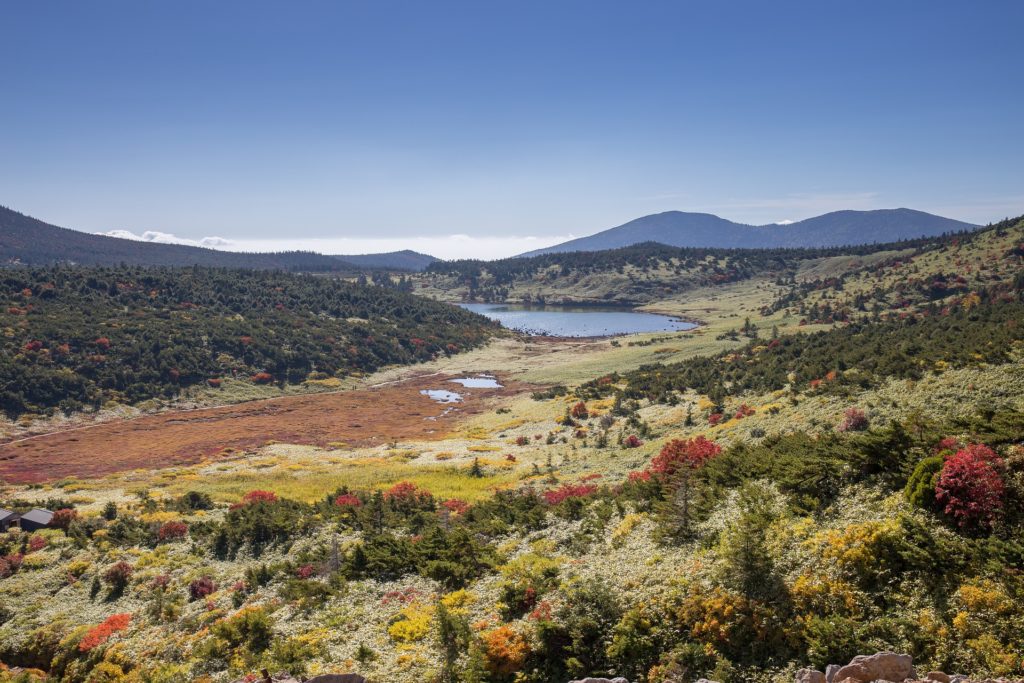Situated close to the Azuma mountains in Japan’s Tohoku region, Fukushima is a city with many natural sightseeing spots, including incredible landforms, scenic hiking trails, authentic hot spring resorts, and spectacular sakura viewing spots.
The capital city of Fukushima Prefecture, Fukushima is approximately 60 kilometres away from the Fukushima Daiichi Nuclear Power Plant, a now retired nuclear power plant that sits on 3.5 square kilometres area of land in the middle of the towns of Futaba and Okuma. The plant became world-renowned after it took major damages after the big magnitude-9 earthquake and tsunami that hit Tohoku’s Pacific coast in March of 2011. Fortunately, residents of Fukushima at that time did not have to evacuate after the disaster, as experts found that the radiation levels were not a danger to anyone’s health.
Today, Fukushima remains free of any health threats related to radiation, and is open all-year round to visitors who wish to explore its nice and pleasant sights and attractions.
How To Get To Fukushima
Trains and highway buses are the best ways to reach Fukushima from other parts of the country.
By Shinkansen, Fukushima is connected to Tokyo by the JR Tohoku Shinkansen Line. A train departs every 10 to 30 minutes, and a one-way trip takes approximately an hour and a half, and costs 8,500 yen.
If taking the ordinary train lines, the one-way journey takes longer, about five or so hours, and involves multiple transfers. As an example, you can get on a limited express train at Tokyo Station and head to Iwaki Station, where you must transfer to a JR Ban-etsu-East Line for Koriyama Station. Once there, you have to get on the JR Tohoku Line headed for Fukushima Station. This example route takes almost six hours and costs roughly the same as a direct Shinkansen ride.
By highway bus, travel between Fukushima and Tokyo takes around five hours. However, compared to the Shinkansen and ordinary trains, it is less expensive, with a one-way ticket priced around 3,000 yen to 5,000 yen. Willer Express, JR Tohoku Bus, Fukushima Kotsu, and JR Kanto Bus offer several buses on a daily basis. You can make reservations, and check timetables, routes, and ticket prices on the Japan Bus Online website and Willer Express’ official website.
Top Attractions in Fukushima
Mount Azuma
A 2,000-metre tall volcano situated along the border of Fukushima Prefecture and Yamagata Prefecture, Mount Azuma offers breathtaking views of the volcanic mountain range, clear ponds, virgin marshlands, rugged craters, and the surrounding terrains.

During the spring and autumn seasons, many hikers trek the Azuma-Kofuki peak (which has an altitude of 1,707 metres), the Higashi Azuma peak (which stands at 1,975 metres), and the Issaikyo peak (which is 1,949 metres high) to enjoy 360-degree views of the gorgeous nature.
In addition, the many trails around the area take you to some of the best spots the mountains have to offer, including the Jododaira Marshlands, the Kamanuma Pond, and the Goshikinuma Pond.
Mount Azuma can be accessed by public buses that only run twice a day during the weekends and national holidays in the months of May, June, July, August, and September. The rest of the year, you have to hire a rental car or taxi to access it.
Hanamiyama
A vast, attractive park sitting on the countryside slopes, on the outskirts of Fukushima, Hanamiyama is home to lots of different varieties of cherry trees. Every spring, it sees dense crowds, as the sakura flowers reach their peak blossoming stage, transforming the park into a spectacular sea of various shades of pink. In autumn, the park is also a popular autumn leaves viewing destination, offering a number of viewpoints up the slopes.
In April, there are shuttle buses that connect Fukushima Station and Hanamiyama. The 15-minute ride costs 250 yen. Taking a leisurely one-hour walk, biking, and hiring a taxi are other available options to access the park.
The official Fukushima City Tourism Guide website contains more information on Hanamiyama.
Takuya Onsen
Situated halfway up Mount Azuma’s slopes, Takuya Onsen is a quaint, little hot spring town that was founded about four centuries ago. Today, it is home to several ryokan, and boasts of high quality natural hot spring baths.
Tamagoyu, a historic wooden bath house, is unarguably the city’s most popular bath. It offers one public bath for males, and a separate one for females. Not too far is another public bath house, called Attaka no Yu, which also has an outdoor foot bath that guests can use for free.
From Fukushima Station, take one of the three to five buses bound for Takayu Onsen. The one-way journey takes about half an hour and costs 820 yen. Getting to the onsen town is also possible via rental cars or taxis.
More information on Takayu Onsen can be found on Takayu Hot Spring Resort’s official website.
Iizaka Onsen
A small, traditional hot spring town, Iizaka Onsen is home to not only top rated natural hot spring baths, but to Japanese-style shops, restaurants, and inns, as well.
Around town, you can also find three public footbaths; Totsuna Bridge, which is Japan’s oldest steel arch bridge; and several eateries to enjoy delicious local foods, including radium tamago, ramen, enban gyoza, and ika-ninjin.
From Fukushima Station, take a 25-minute ride on the Iizaka Line to Iizaka Onsen Station.
Getting Around Fukushima
Fukushima is served by buses that connect the different areas in the downtown area. However, for destinations on the outskirts, like Mount Azuma and Takuya Onsen, rental cars and taxis are the more convenient options. There are rental car booths and taxi stands around the vicinity of Fukushima Station.
Weather in Fukushima
Fukushima is very rainy in the summer, most especially in July and September. Daily temperatures are also at their peak, with temperatures in the mid 20s degrees Celsius. From October to early December, the days start to become cooler, as daily temperatures slowly dip from 15 degrees to 5 degrees. In winter, expect the temperatures to drop to 0 degrees and some snowy days. In spring, the daily mean temperature is between 2 degrees to 12 degrees, and the days are generally dry.
